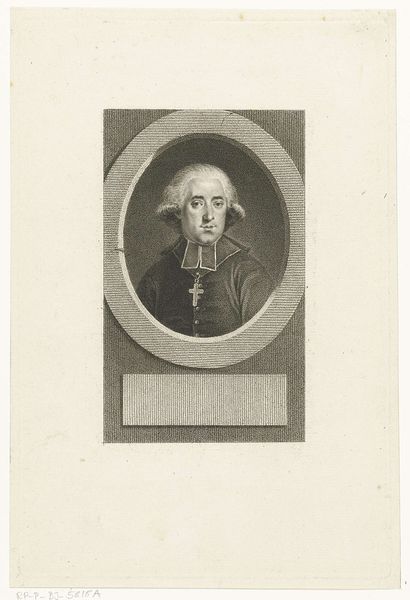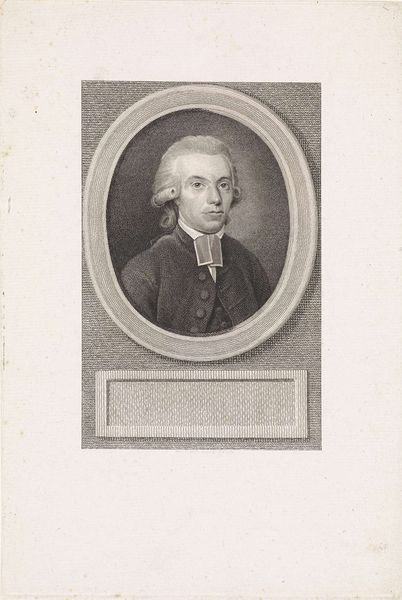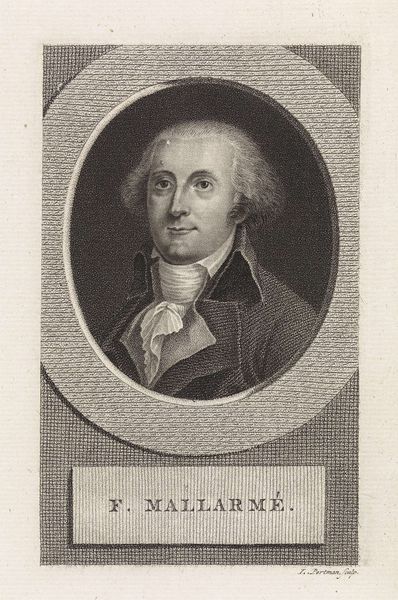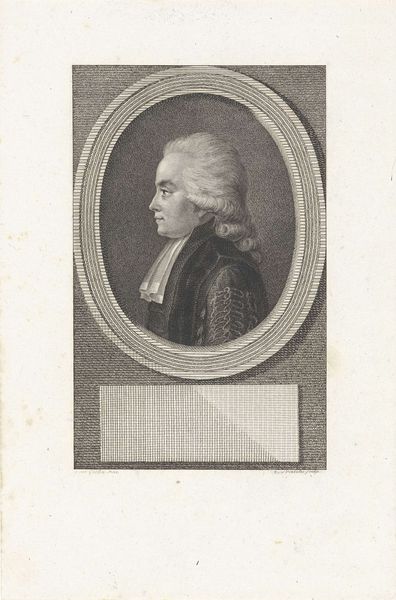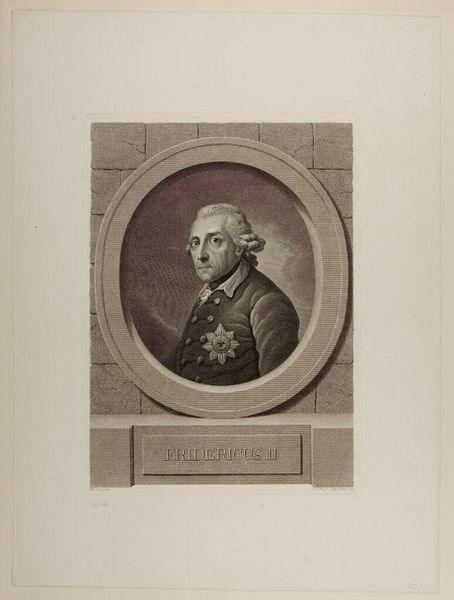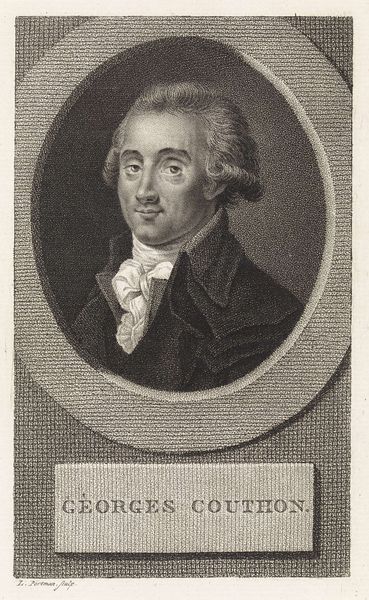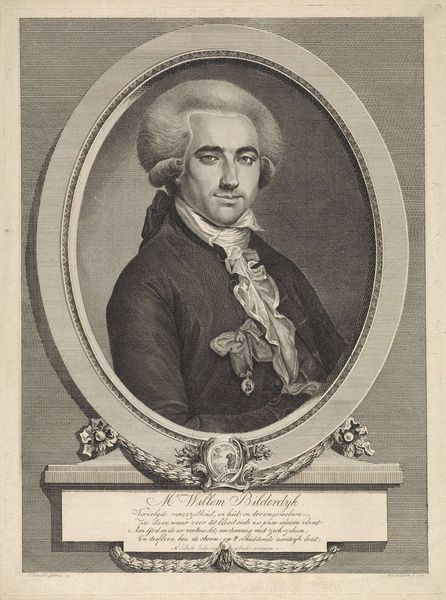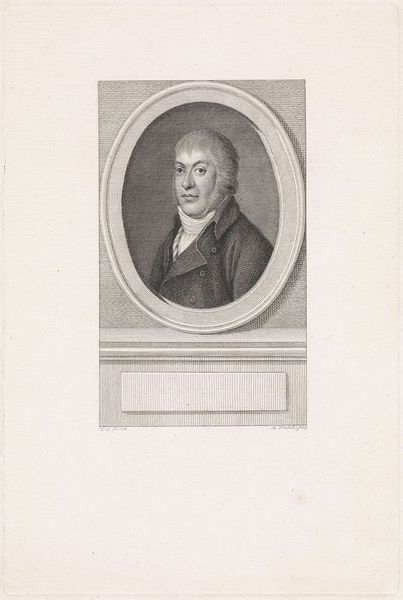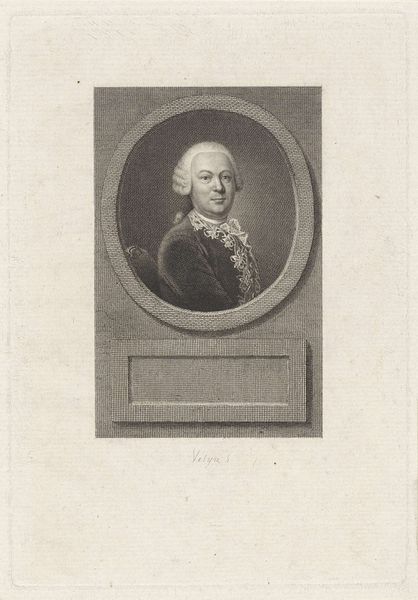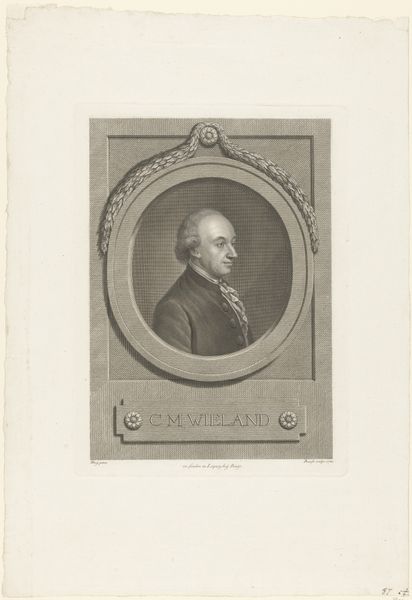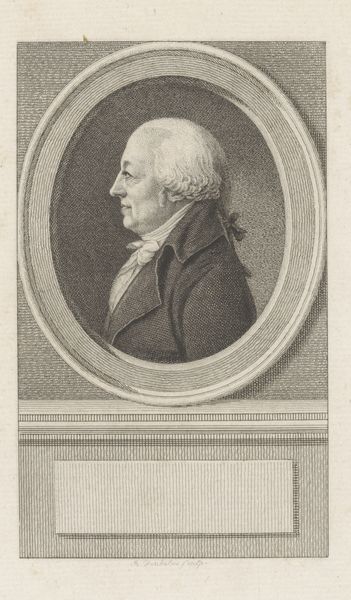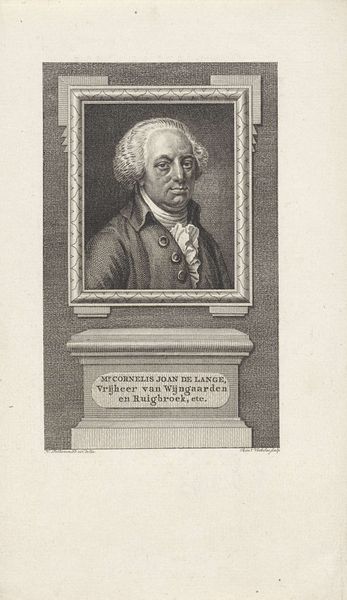
print, paper, engraving
#
portrait
#
neoclacissism
#
aged paper
# print
#
light coloured
#
paper
#
historical photography
#
engraving
Dimensions: height 238 mm, width 160 mm
Copyright: Rijks Museum: Open Domain
Curator: Looking at this engraving, “Portret van Pierre Louis Manuel” created sometime between 1792 and 1808 by Lambertus Antonius Claessens, I immediately think of the revolution and its discontents. The whole piece has a rather sombre mood, wouldn’t you say? Editor: Absolutely. The austerity, that restricted palette… it really speaks to the materials at hand, and the labour involved in replicating images at this scale, at this moment in history. Before photography, each print was a statement. Curator: He does look rather trapped in that oval, doesn’t he? It’s interesting—Pierre Louis Manuel was a key figure during the French Revolution, though he was later guillotined. This neoclassical style, so ordered and controlled, feels almost ironic given the chaos he lived through. Editor: Exactly, chaos carefully mediated through the engraving process. Notice how the lines are meticulously etched—this isn't some spontaneous sketch. It speaks to a whole network: the artist, the publisher, the paper maker…all dependent on these burgeoning social shifts. That blank plaque underneath cries out to be read, a very material demand. Curator: A ghostly, hovering space waiting for definition… or maybe for someone to write his epitaph. This level of constraint must have seemed a real shift in how one makes an image—all for that perfectly contained likeness. Almost eerie, in a way. Editor: And let’s not forget the economic aspects; prints made art and ideas accessible beyond the aristocracy, but even now you can see it fading, paper degrading over time. Material tells us stories, you know. Curator: A very apt image for a man whose life was marked by extreme change and societal upheaval. It brings new depths to our view of revolution, showing us how it reverberated through every facet of society at the time, right down to this unassuming artwork. Editor: Indeed. Examining it from a material standpoint lets us consider the social life embedded in the print itself. Who consumed these images and what work was behind its creation, and its now fading form. A perfect encapsulation of the era.
Comments
No comments
Be the first to comment and join the conversation on the ultimate creative platform.
